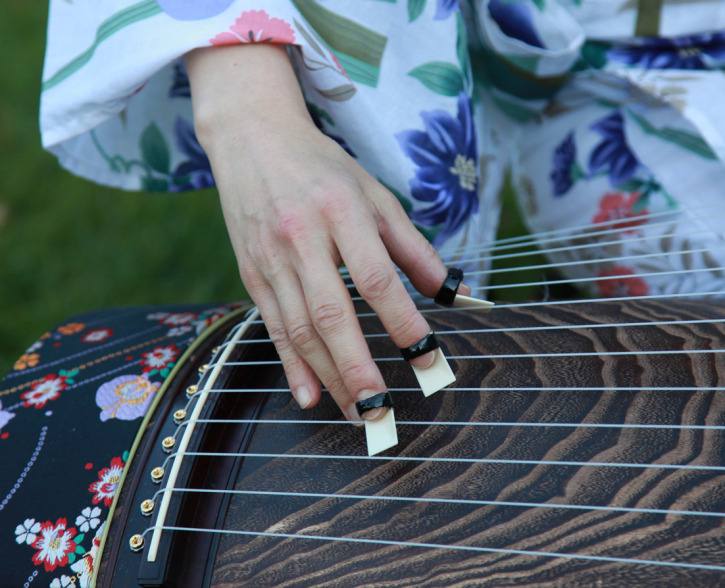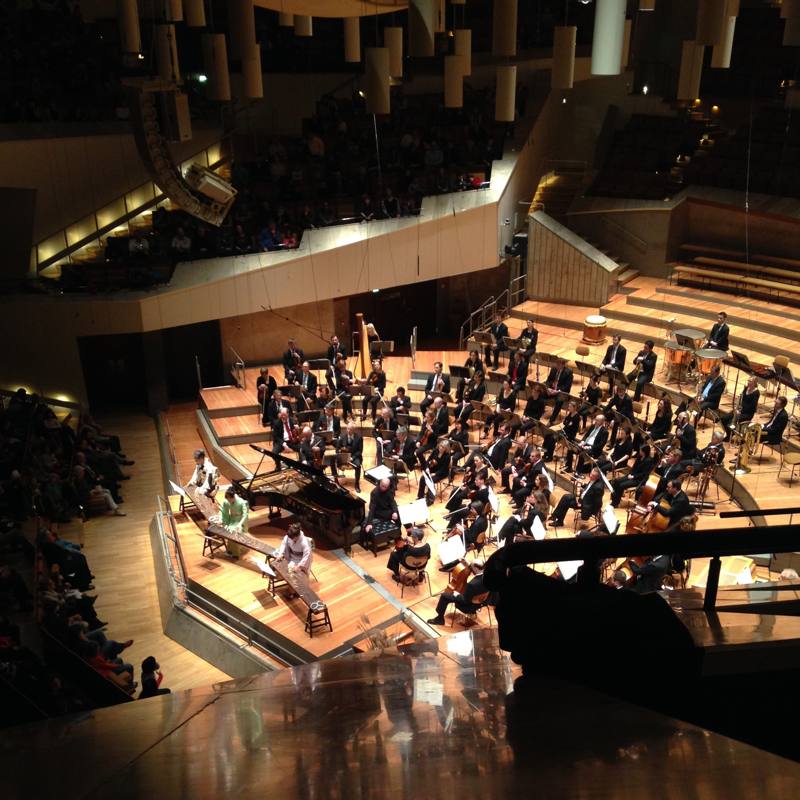The koto, the Japanese harp, is a traditional Japanese instrument, a kind of plucked instrument.
A normal koto is about 1m 80 length and hollow on the inside, so the koto is not as heavy as you think, about 6-7kg. The main part is made of paulownia wood. The paulownia thrive hardly in Europe. On the inside of the body are processed with the beautiful carvings, for improvement in a sound effect. Unfortunately, listeners can’t see it.

The original native koto, called Yamato-koto, existed in Japan since before of Christ. After the Chinese koto was imported from China in the 8th century and further developed into today’s koto. At that time, playing the koto was one of the traditional Japanese arts of the Emperor‘s court and only the aristocrats were allowed to study the koto.

The koto has 13 strings, but in recent years new forms of koto have been developed with multiple strings (e.g., 17, 25 strings).
„Does koto have only 13 tones ???“
„How can that be!“
The strings of the koto are clamped with the bridges. You can strike different tones by moving of bridges and also move the bridges while playing. Otherwise by many techniques, different sounds can be struck on the koto.
When you are playing, you put three picks on the right fingers (on the thumb, index finger and the middle finger). The picks are put, like the rings.

The Japanese koto has a distinguishing unique feature. It symbolizes the figure of the dragon. The individual parts were named after the dragon. for example „dragon’s head“, „dragon’s eye“, „dragon’s belly“ etc. On the story and the tale in Europe dragons appeared as a wicked symbol. But for Japanese, dragon is God, which is being honored. Consequently, Whenever I sit down in front of the Koto, I get a feeling of worship.

Both instruments, „koto and shamisen“ have to be learned together in some koto schools.
In traditional concert with Japanese instruments is often played the shakuhachi (bamboo flute) or kokyū (string instrument) in addition to the koto and shamisen. There are many pieces of music for ensemble.
Okayama


